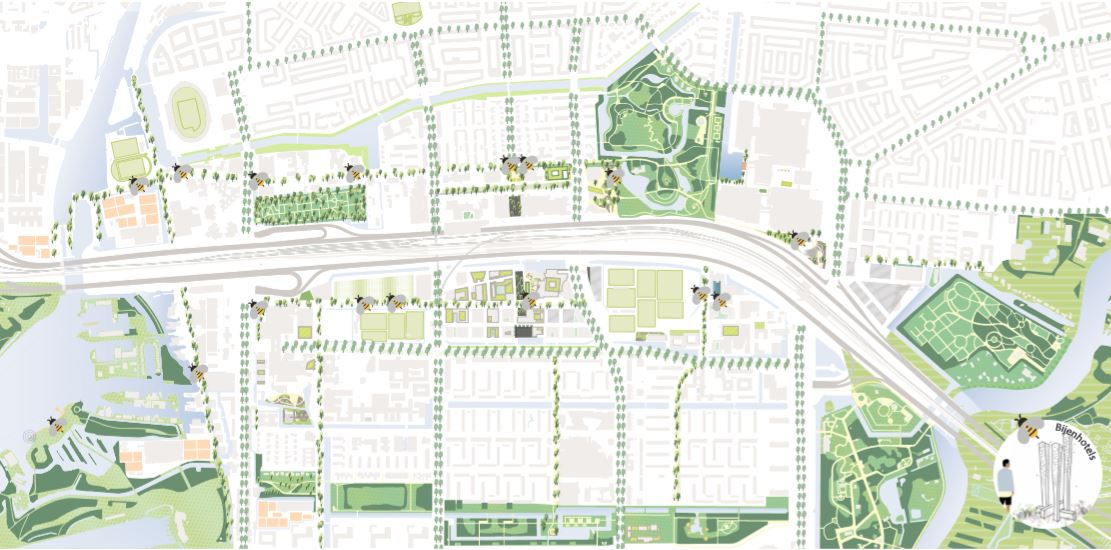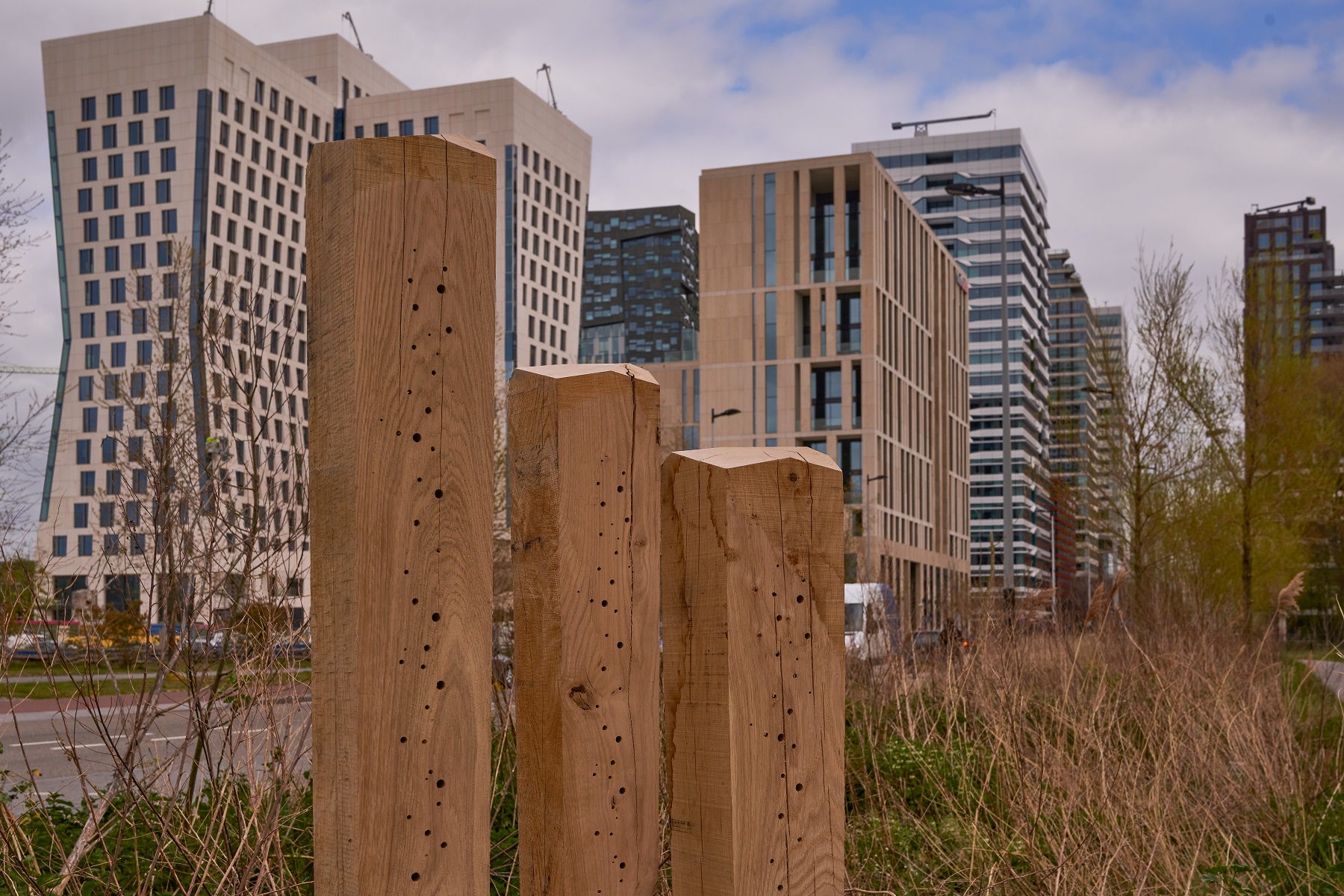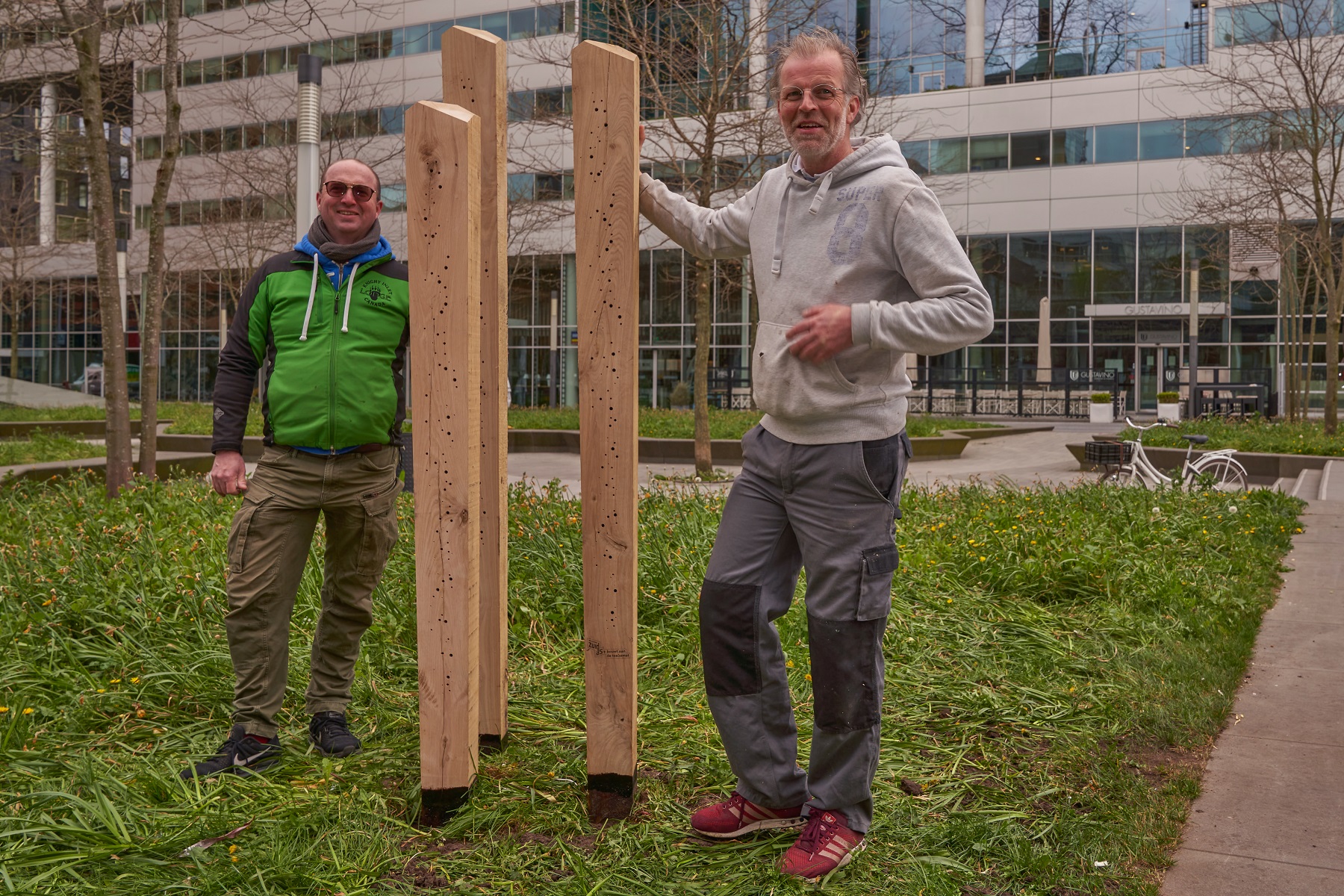In the summer of 2019, this was one of the prize-winning green initiatives suggested by resident Ton Wagemans and his daughter Julie: installing more insect hotels in Zuidas. In the week of 14 April 2020, we rapidly built 19 of these special hotels, designed by Aad Kruiswijk (on the right in the photo above) and Willem van den Broek (left) from BureauAat. The hotels will be located at RAI and Amsterdam Zuid stations and elsewhere.
Built on experience
‘Building the hotels takes no time at all’, explains Van den Broek. ‘The hotels themselves are prefabricated, including the poles that they stand on. All we have to do is assemble them.’ For Kruiswijk especially, this is certainly not his first experience with bee hotels. The crystal-shaped roof of the hotel is actually his brainchild. ‘Experience shows that this makes damp weather conditions less of a problem, ensuring the entrances used by the bees stay dry. If they get wet, the nest behind the entrance can lose its integrity.’

Solitary bees
The bee hotels are not intended for the familiar honeybee, but for solitary bees. As the name suggests, these bees do not live in groups. Van den Broek: ‘People who walk past the hotels don’t need to worry about being chased by swarms of bees.’ Kruiswijk: ‘In any case, the solitary bee doesn’t venture too far away from the hotel. It first collects pollen at a radius of 200 metres, which it places in one of the hotel chambers, together with a larva. This process is usually repeated around seven times, so that each chamber eventually has seven larvae in it. The bee then seals up the entrance.’ Van den Broek: ‘With each hotel having around 540 chambers, large numbers of new bees will emerge from the hotel a season later.’
Nectar sources
‘To ensure that the bees come, it’s important for there to be plants that are nectar sources within a 200-metre radius of the hotel’, continues Van den Broek. ‘These plants provide the insects with food and building blocks for the bees’ nests in the form of nectar and pollen and the insects also cross-pollinate the plants at the same time.’ Plants like this include daisies, shrubs and dandelions. They grow in such places as Beatrixpark and the city is also planting some itself close to the 19 bee hotels, which will soon be spread across the whole of Zuidas.

See for yourself
When the hotels have been put in place, Kruiswijk and Van den Broek’s work will be done. ‘That’s what makes a hotel like this so great. You give nature a helping hand and then the bees take over’, says Van den Broek. ‘Oak wood is also very sturdy and long-lasting.’ Every passerby will soon be able to see for themselves how popular the hotels are proving with the bees. Kruiswijk: ‘If the holes are still hollow, there are no larvae in them and if there’s a natural wall in front, it means the chambers are occupied. It couldn’t be any clearer.’ When it’s permitted again, we plan to join the initiators on a tour of the bee route and find out if they’re satisfied with the way their idea has become a reality.

Give your opinion